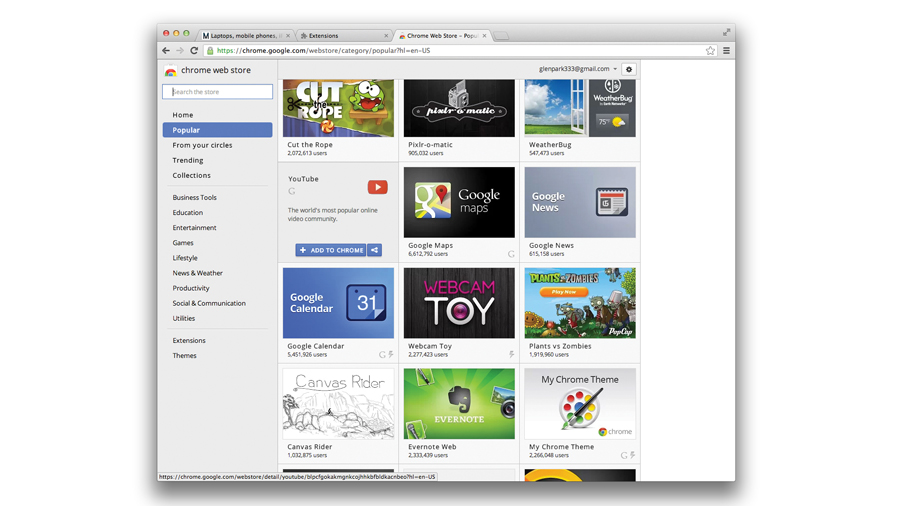Best Mac browser: pick the best Safari alternative for you
We pitch Apple's browser against the popular alternatives
Apple hasn't yet made it possible to change the default browser on iOS, so links from mails and suchlike will still open up in Safari, but this can be easily worked around by copying and pasting links instead of tapping on them.
Do it your way
We spend so much time using websites for so many different things in our personal and working lives that if there's something you could be doing faster or more efficiently, or if you've always wished something would work slightly differently, there's no reason not to check out the alternatives to Safari. The chances are that at least one of them will hold the key to smoother surfing.
Here's a look at what else you could be accessing the web with.
Google Chrome
Google's browser may be young but it's quickly gone to the top of the class…

Considering Google hasn't been around for all that long, it's now one of the biggest tech companies in the world. It didn't rest on its laurels, and after developing the first search engine that actually worked in a way that people wanted, it began to move into making software.
It gives the vast majority of this away for free, and funds it all by selling advertising targeted to users based on the information it gathers about them. Being an almost entirely web-based company, it makes sense that Google would have developed its own browser rather than relying on its two main competitors - Apple and Microsoft - or the plethora of smaller browser developers, to make something as important as the container inside which all its services run.
New kid on the block
Chrome hasn't been around very long but has quickly become popular, due to the fact it's an excellent browser. On the Mac it offers some different features than Safari, and on Windows many people install it because it's so much slicker than Internet Explorer. Since Google is so web-focused as a company, even more so than Apple or Microsoft, it's always likely to make the best browser it can, and keep it updated.
Sign up for breaking news, reviews, opinion, top tech deals, and more.
Based on the open source Chromium browser, Google made several important changes before re-branding it as Chrome. These include adding a built-in Flash Player so it's not necessary to install Flash separately, a built-in PDF viewer, a preview and print system and an automatic update system.
Based on the WebKit rendering engine, it's widely regarded as being among the fastest browsers around, if not the fastest, and consistently leads the field in both rendering speed tests and support for a huge range of web technologies. Remember that it's a long time since websites just contained pictures and text. A modern browser is actually incredibly complex, needing to support not only sound and video but web applications, increasingly advanced HTML5 interactive elements and user-generated content and do all this while remaining snappy.
Under the hood, Chrome uses the V8 JavaScript engine to help run complex web applications more efficiently. JavaScript performance is a key benchmark these days, with many websites using the technology to power advanced tools.
Back to basics
Chrome is stripped back and simple to look at. The majority of its technology is hidden from the user and it avoids lots of menus, buttons and icons, focusing instead on showing you web pages. It can be customised and extended, but only if you choose to do so.
For a lot of people, the simplicity of the interface is reason enough to like it. It was one of the first browsers to use the 'Omnibox', a unified URL and search field where you type either web addresses or search terms. Chrome is smart enough to know if you're searching and will not only suggest search terms but also show corresponding recent searches or recently visited sites.